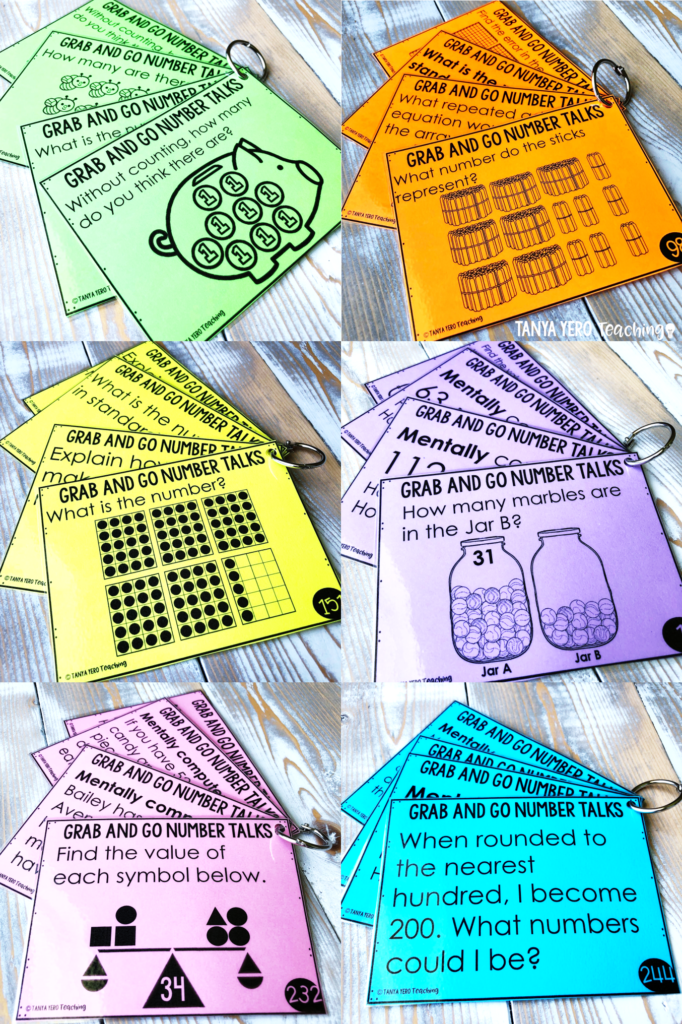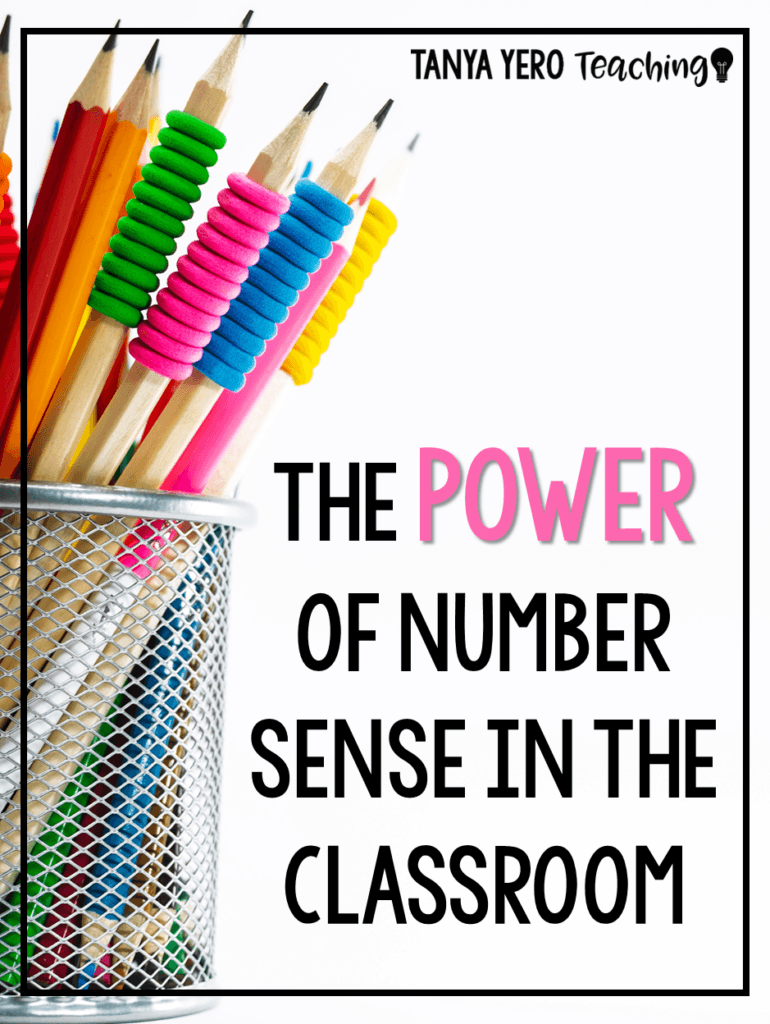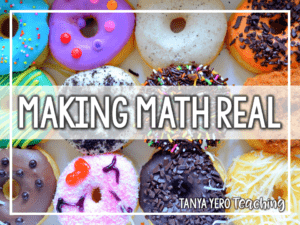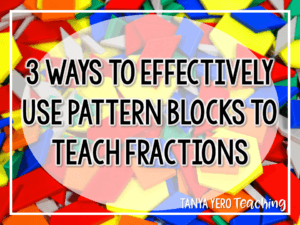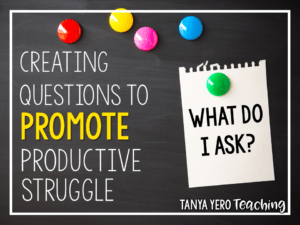When I first started teaching I taught “to the test.” I taught 3rd grade which in Florida is a grade level that completes standardized testing. It’s also a retention year, which means if your students don’t reach a specific score or higher they must repeat 3rd grade. The pressure was overwhelming. I wanted to make administration and the families of my students happy. I thought the answer was in covering ALL the math curriculum I knew would be on the test in the FASTEST way possible. I would speed thru lessons so I had enough time to go back the last few weeks before the test and review.
Then my first year turned into my second year and by the time the third year rolled around I realized I was creating robotic math students that were simply trained to take a test. They weren’t problem solvers. They lacked number sense and basic strategies that I knew they would need in the real world. They understood procedural learning more than conceptual understanding.
What REALLY is number sense?
Number sense is a child’s set of skills when working with numbers. More importantly, number sense is one’s ability to see the flexibility in numbers. Children with number sense understand quantities, grasps basic concepts, and understand key operations and symbols. But this all leads to the bigger picture of what number sense really is. A child with a strong foundation in number sense can identify multiple ways to solve problems. Number sense supports the beauty and creativity of each child’s mind and how they interpret a question.
The Questions You Ask (And Don’t Ask) Will Affect Your Students’ Number Sense
It’s not enough to teach your students basic algorithms and train them to memorize the steps. When I teach a new math concept the algorithm is the LAST thing I introduce. Why? I want to strengthen my students’ number sense. Math is designed to be fun and exploratory and more often than not we take the drill and kill approach. This approach leaves out the opportunity for good quality questioning.
At the beginning of the year I introduce strategies for manipulating numbers and equations. Expect your students to come to you lacking number sense tools. You have to teach them this style of math and how it works. The posters below stay up in my classroom all year.
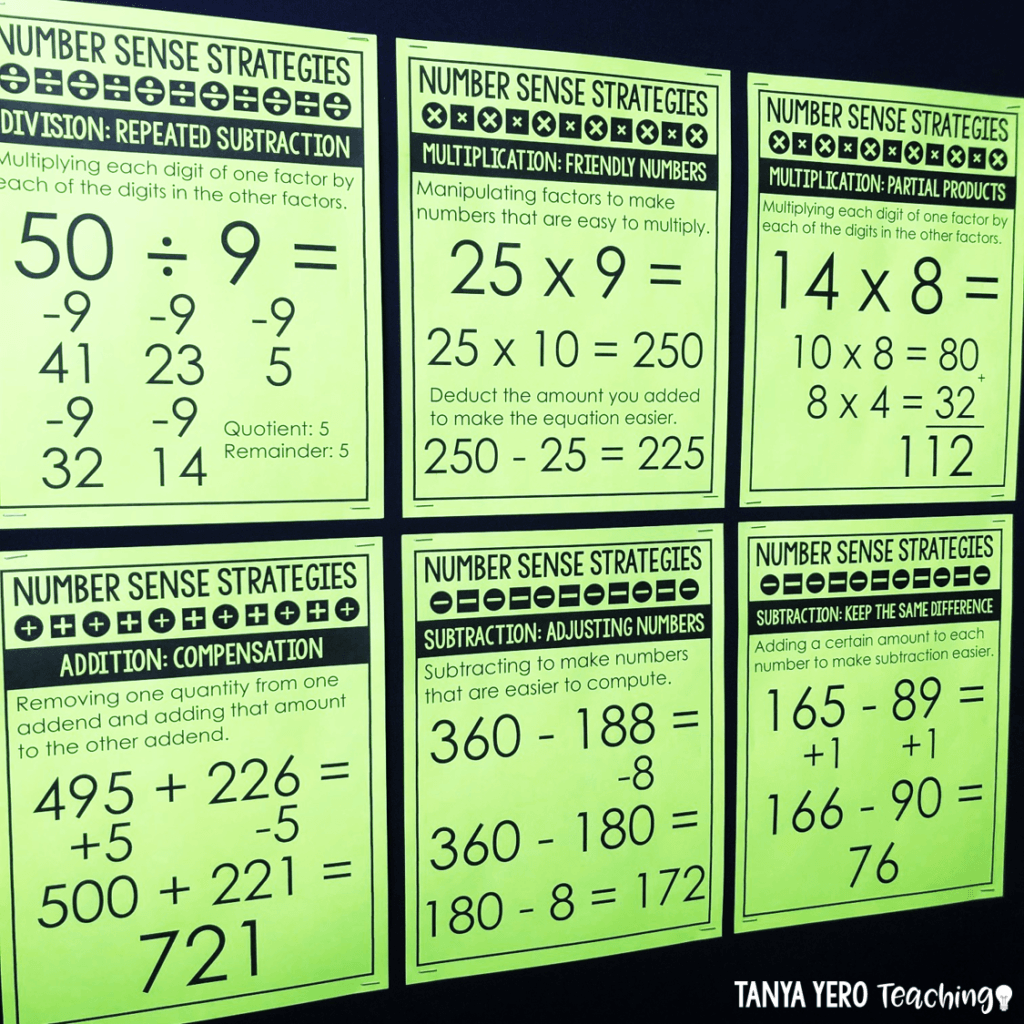
I spend time modeling my own thinking, providing opportunities for peer discussion, and integrating manipulatives whenever I can. With time, students will organically begin to manipulative numbers on their own.
The following pictures are samples that I have pulled from student responses when asked to solve 24 x 9. Students that have the ability to see various ways to solve one problem have strong number sense.
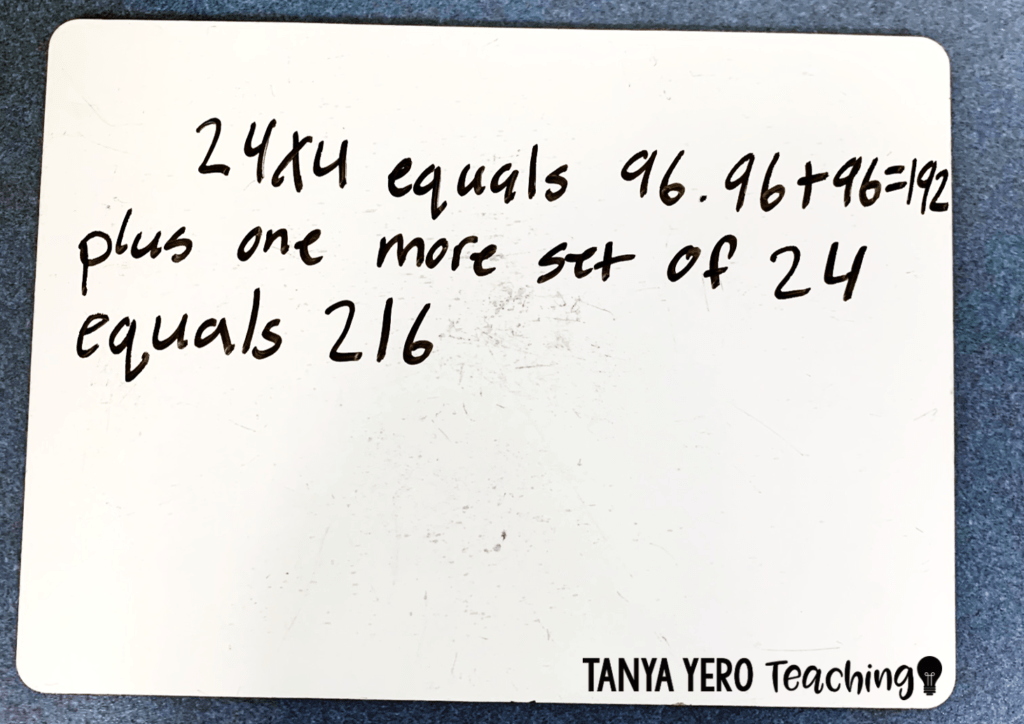
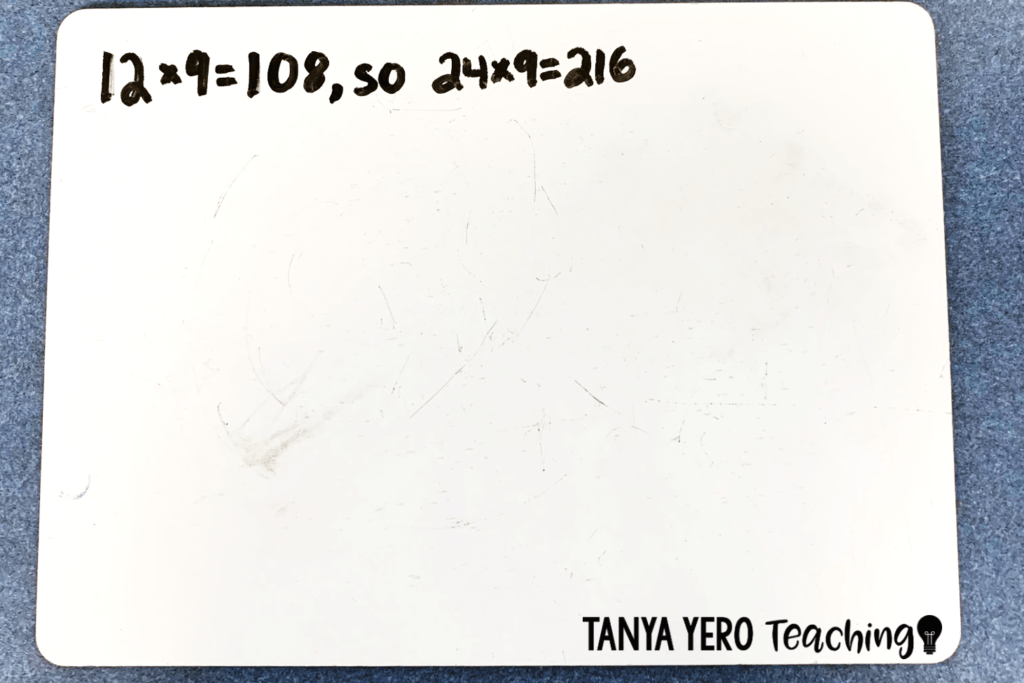
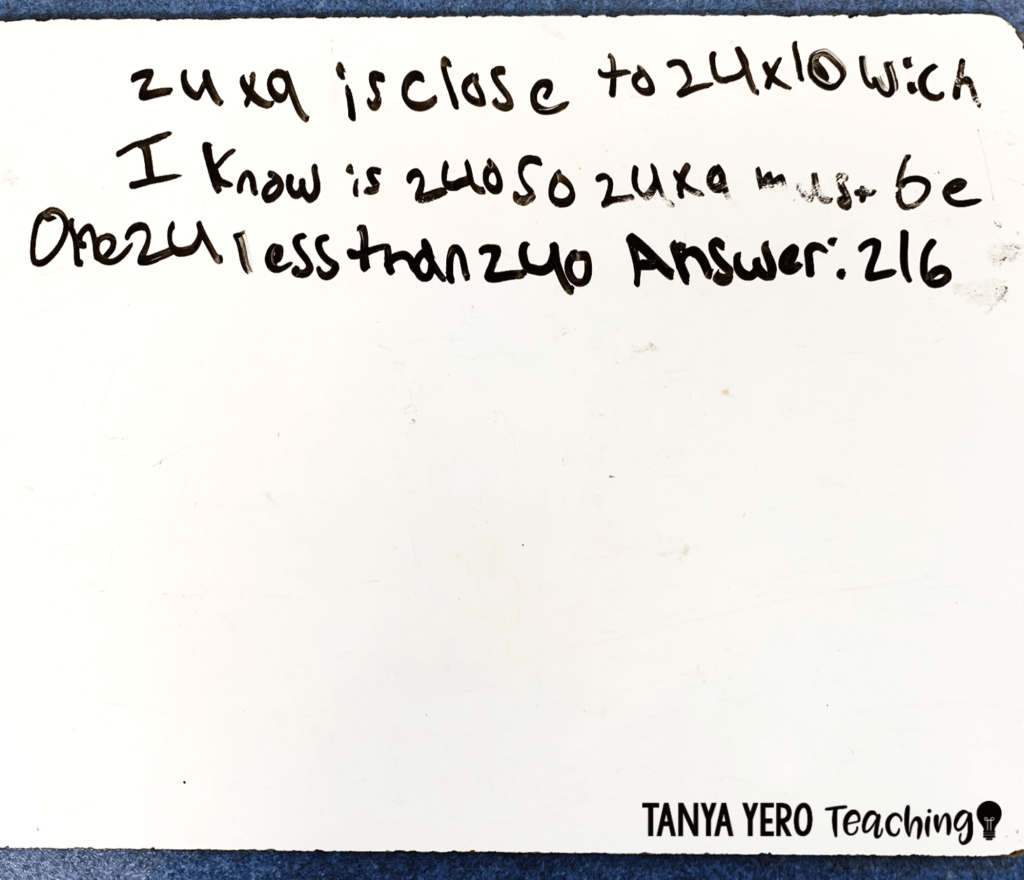
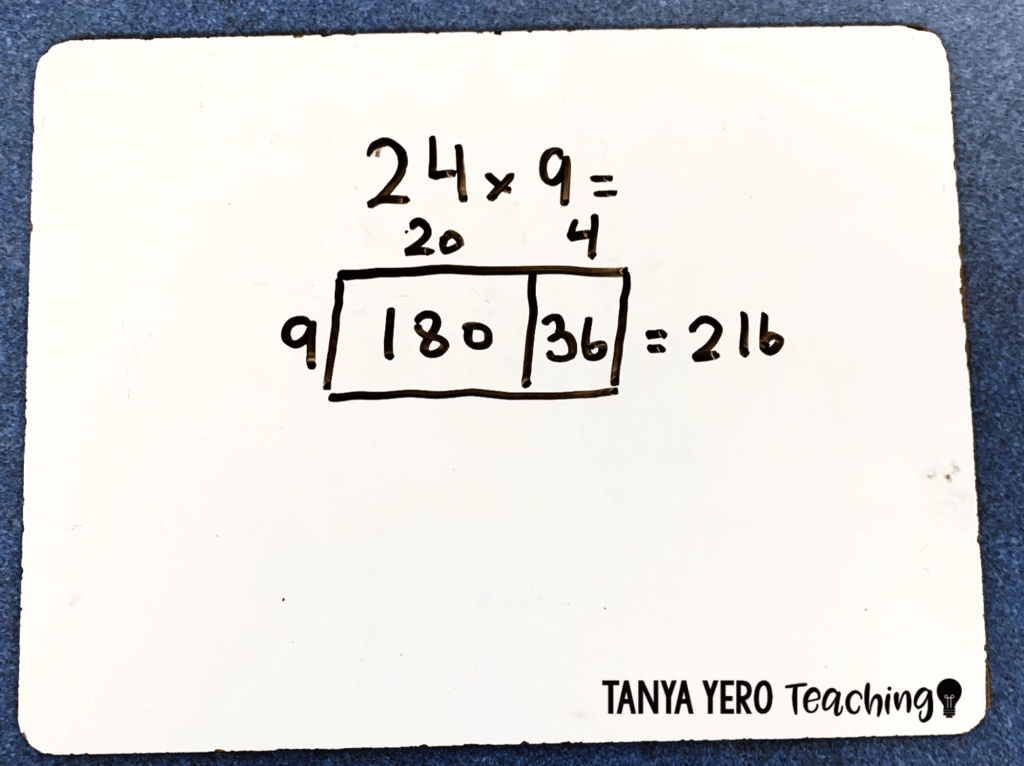
Below is the complete list of strategies we came up with together as a class:
24 x 9 is close to 24 x 10 which I know is 240, so 24 x 9 must be one 24 less than 240. Answer: 216
25 x 10 is 225 so 24 x 9 must be 216.
12 x 9 is 108, so 24 x 9 will be double or 219.
20 x 9 is 180. 4 x 9 is 36. 180 + 36 = 216.
24 x 4 equals 96. 96 + 96 = 192 plus one more set of 24 equals 216.
Area model of 24 x 9
Asking questions such as “Does this mathematically make sense?” And “What does this look like in visual form?” will force your students to justify their answers and use multiple strategies. Never accept only one way of solving a problem. Encourage students to share their methods and celebrate the diversity of strategies. Push student thinking and ask meaningful questions. I used the following questions to steer my students towards the equations above.
“How can we use doubles to solve this problem?”
“How can an area model help us solve a multiplication equation?”
“How can we use multiples of 10 to help us solve this problem?”
What Does Number Sense Practice Look Like In The Classroom?
A class that is heavy in procedural questioning lacks the practice of number sense. Students are relying on the memorization of algorithms to solve problems. I provide questions, especially word problems that are rigorous and deep in conceptual understanding. These sorts of questions lend themselves beautifully to discussions that build number sense.
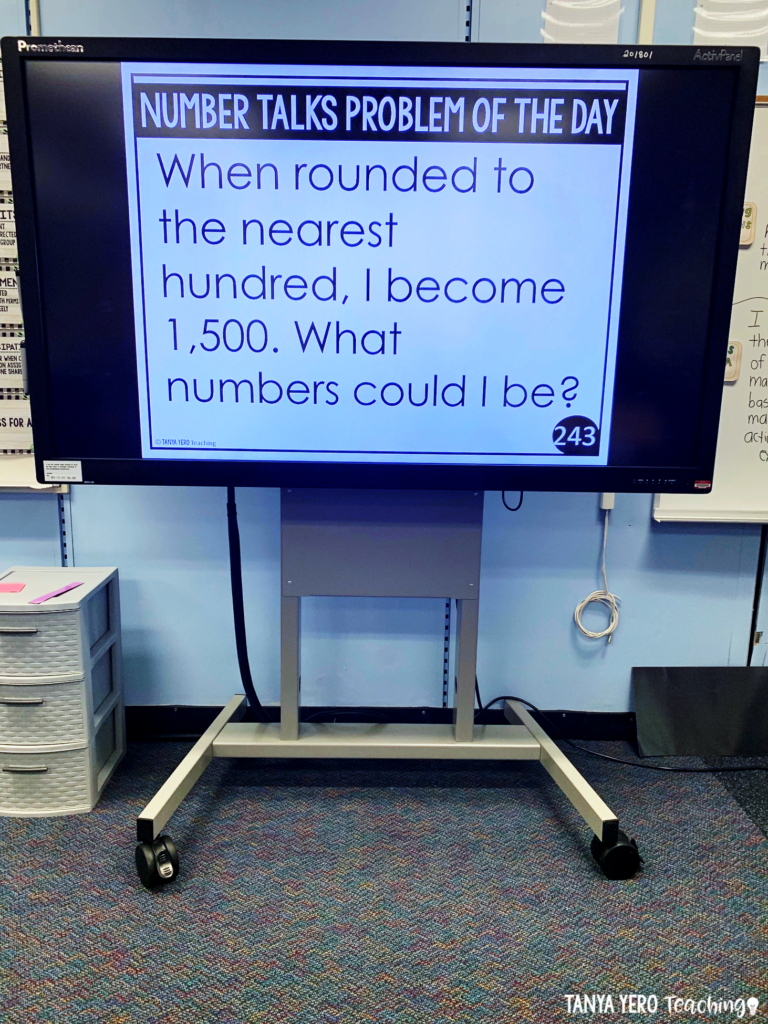
I also integrate Number Talks into my math block for extra practice that is specifically designed for number sense practice. Number Talks is a quick 5-7 minute discussion that builds mental math and number flexibility. CLICK HERE to read more.
